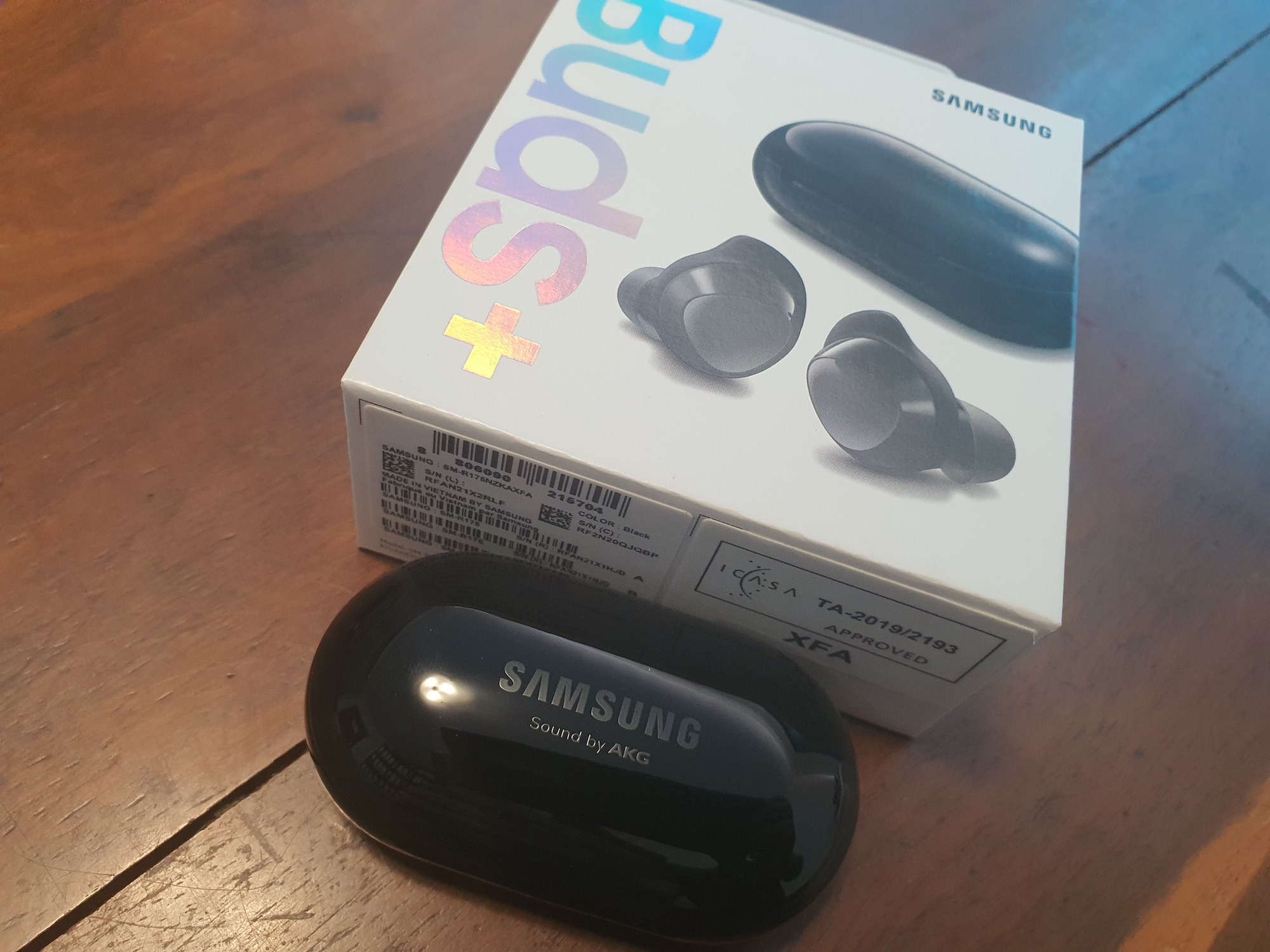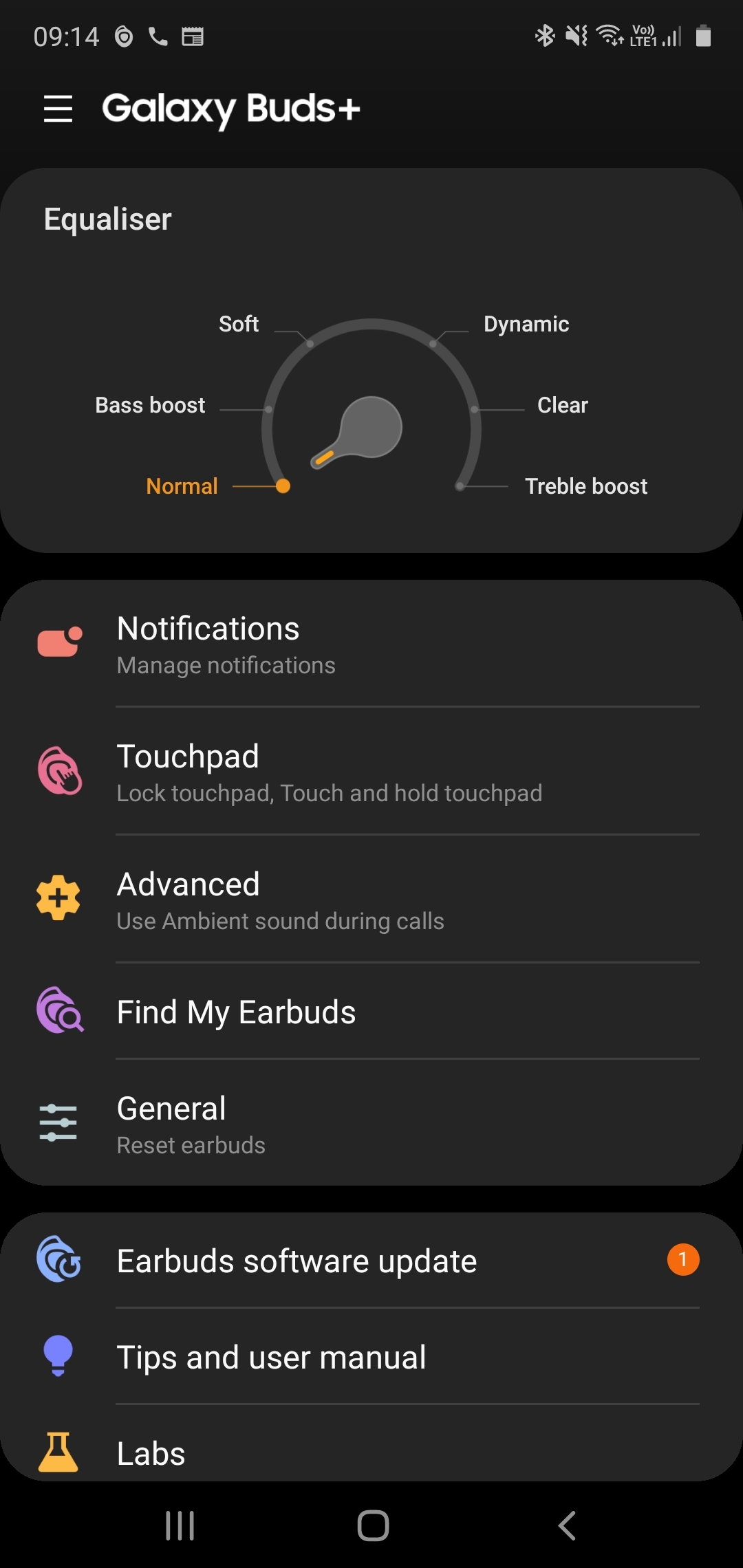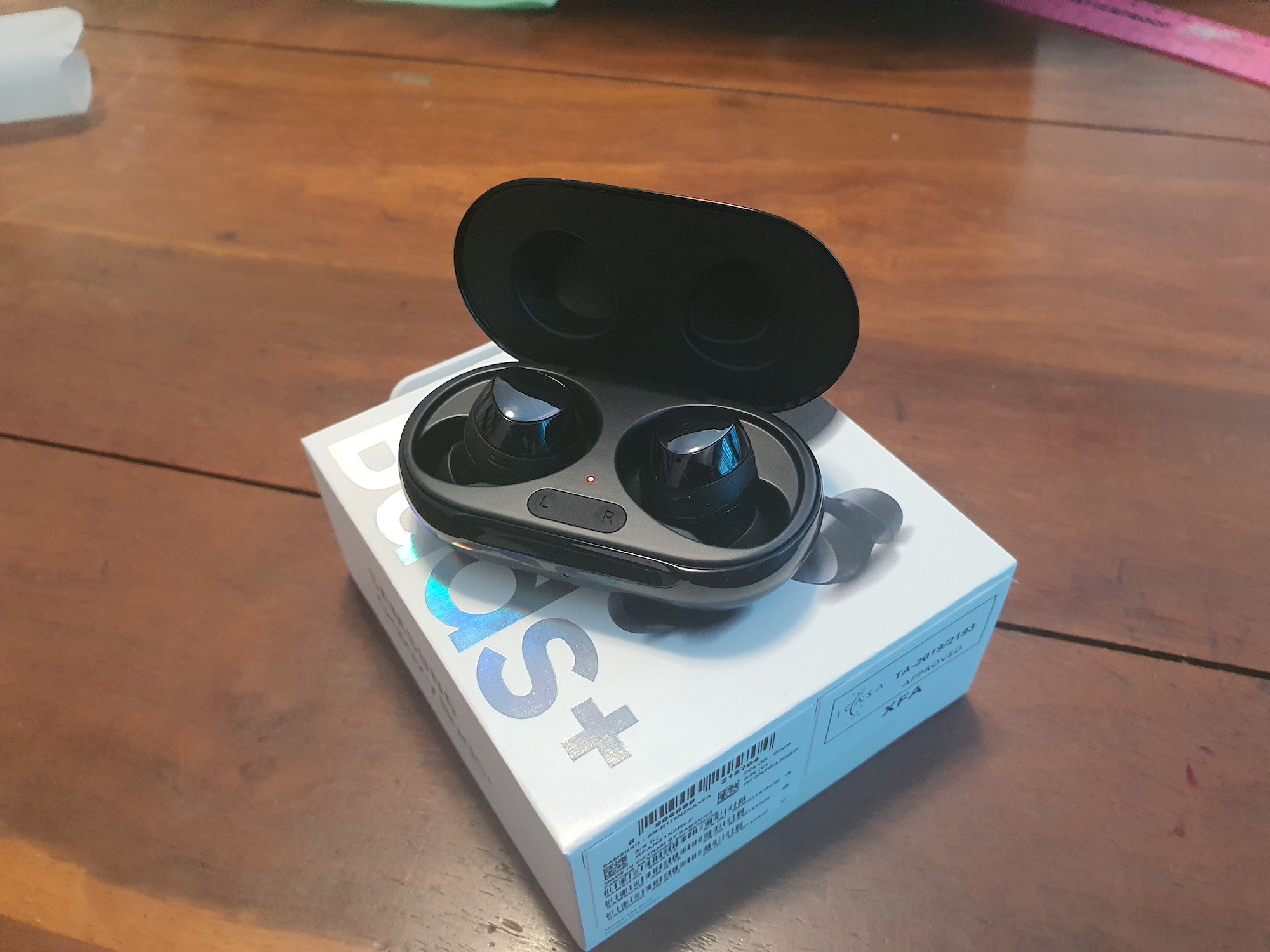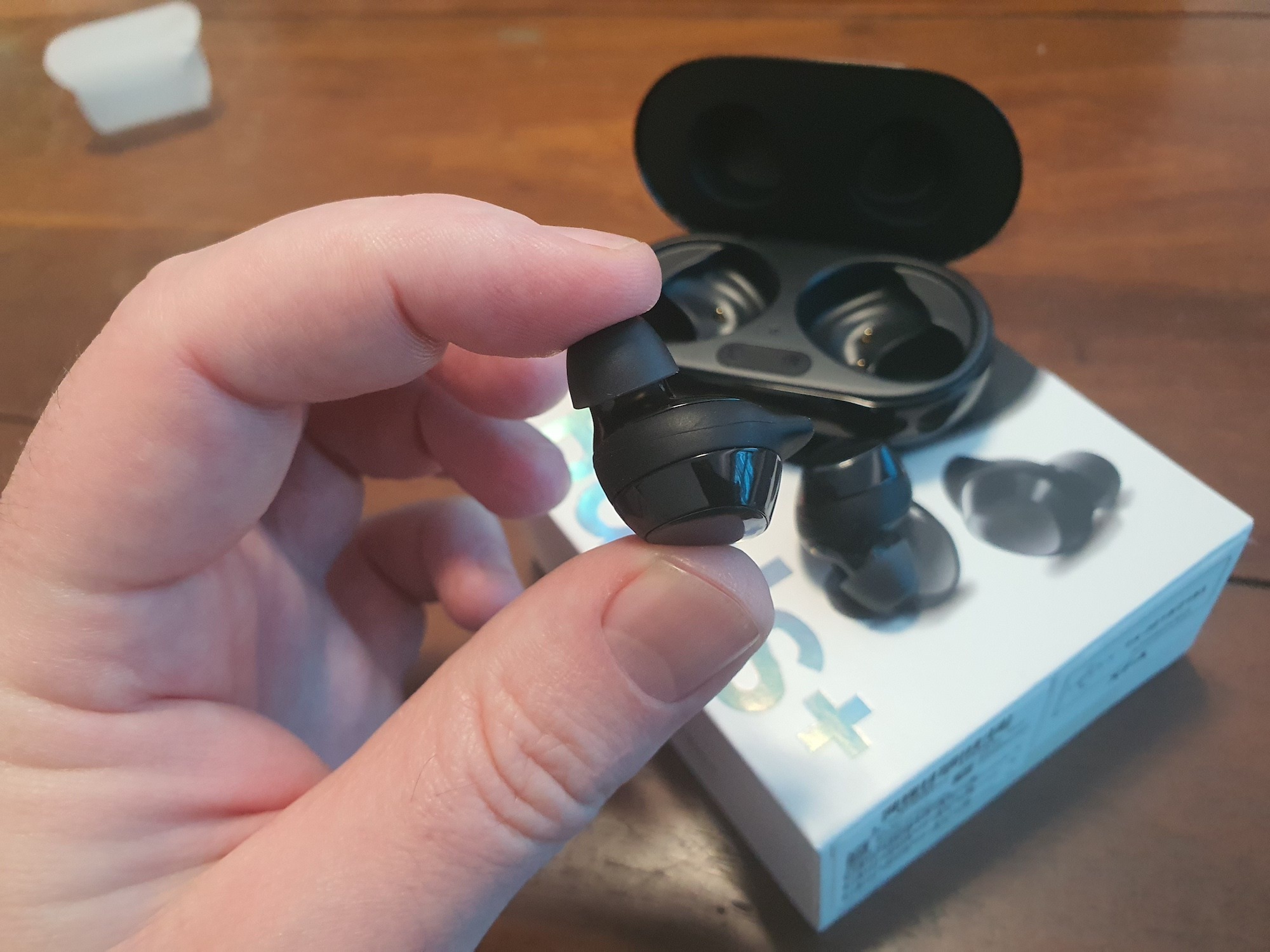The ladies and gents who make up Stuff spend loads of time using headphones. We all love to talk and sometimes, in order to get anything done, the noise has to be blocked out. Long story short, it takes quite a bit to impress us on the headphone front. We’ve used plenty of ’em and many come short. Samsung’s Galaxy Buds+, however, are impressive from the outset.
Slick as ever
 And not just because they’re pretty — although the Galaxy Buds+ are a rather attractive pair. The smooth capsule-shaped black charging case gives the Buds an almost medical feel — which is a good thing these days.
And not just because they’re pretty — although the Galaxy Buds+ are a rather attractive pair. The smooth capsule-shaped black charging case gives the Buds an almost medical feel — which is a good thing these days.
Popping the case open reveals the Buds themselves — sturdy, compact critters that twist easily into your ear and sit there almost weightlessly. Almost. The earbuds weigh in at 6.3 grams a pop but when they’ve been placed in an ear you’re mostly aware of them as a lack of sound. At least, that’s what our initial testing says. We’ve only been using these things for a few hours.
Set up to succeed
 Getting the Galaxy Buds+ ready for their first test-drive was the work of minutes. This was for a few reasons: a) we work at Stuff, b) we were pairing with a Samsung Galaxy Note 10 Plus and all the apps were pre-installed and c) it’s actually pretty easy. Initial firmware updates were ready in moments and installed just as quickly. The earbuds sounded good in the few minutes before the updates turned up anyway so… yeah, always update the firmware. Even if you can’t tell the difference afterwards.
Getting the Galaxy Buds+ ready for their first test-drive was the work of minutes. This was for a few reasons: a) we work at Stuff, b) we were pairing with a Samsung Galaxy Note 10 Plus and all the apps were pre-installed and c) it’s actually pretty easy. Initial firmware updates were ready in moments and installed just as quickly. The earbuds sounded good in the few minutes before the updates turned up anyway so… yeah, always update the firmware. Even if you can’t tell the difference afterwards.
The app’s pretty user-friendly as well, though it goes heavier on the required permissions than we’d like. Requiring your location data all the time in order to track the Buds+ is a plausible excuse but… really? Sounds like an excuse to harvest user location information to us. But hey, everyone’s doing it, right? Right?!
Sounds like a winner
 But you might forgive Samsung for wanting to plug your movements into their dystopian databanks when you hear what the Galaxy Buds+ sound like. With everything set to default — we haven’t had time to start really fiddling yet — audio from something as pedestrian as Spotify is clear, detailed and well defined. Tracks are bassy without being overblown, vocals are crisp (and we’re listening to metal here), and lesser-spotted notes in the mids and highs are easy to spot.
But you might forgive Samsung for wanting to plug your movements into their dystopian databanks when you hear what the Galaxy Buds+ sound like. With everything set to default — we haven’t had time to start really fiddling yet — audio from something as pedestrian as Spotify is clear, detailed and well defined. Tracks are bassy without being overblown, vocals are crisp (and we’re listening to metal here), and lesser-spotted notes in the mids and highs are easy to spot.
The headphone fit and integrated noise-cancelling combine to leave wearers in a blissfully-musical little cocoon, where audio skills can really show themselves off. Generally, we crank whatever we’re using to max because — well, 25 years of death metal leaves you a little deaf. These buds, though, we don’t like to push past the recommended volume because they’re a little loud. Not distorted. Just loud. But we’re using these with a Samsung phone only at this point — a broader test is coming. Hopefully quality carries over to something that isn’t made by Samsung.
Fit’n’is device in my ears
We’ve mentioned the fit a few times so far but it’s really quite slick. There are a selection of tips and spacers included in the box if you’ve got weirder (or just larger) lugholes but we popped these in right out the box and the fit was nigh perfect. Insertion is almost intuitive — pop the bud in and it drops down into the curves of your ear. Press a little to seat it and you could go running in them. We haven’t, yet, because it’s nasty out there, but some vigorous jumping around the living room failed to unseat them. We’ll take ’em on a 5K as soon as possible.
Samsung Galaxy Buds+: Initial verdict
 It should be pretty obvious — our first impression of Samsung’s new Galaxy Buds+ is a good one. There is a caveat, though. We’ve been using these in ideal conditions. Samsung hardware, Samsung app, Samsung setup — and we’ve given them a break for the permissions as well.
It should be pretty obvious — our first impression of Samsung’s new Galaxy Buds+ is a good one. There is a caveat, though. We’ve been using these in ideal conditions. Samsung hardware, Samsung app, Samsung setup — and we’ve given them a break for the permissions as well.
Based on the pricing, features (so far) and how they sound and feel after a bare few hours, though, the Galaxy Buds+ are worth your time. And that’s if you spend R3,000 on a pair instead of getting them free because you ordered a flagship. Up next — other devices, usage without the app, battery life (and charging) and long-term usage. Stay tuned. And stay safe, yeah?



